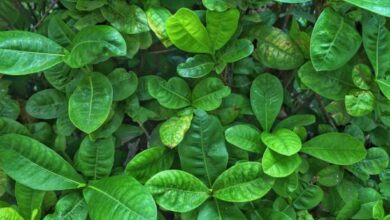5 Things Plants Need to Grow |How do you grow the plants?|

Plants need different components to flourish and develop. Very much like any living life form, plants require specific circumstances and assets to guarantee their wellbeing and improvement. In this blog entry, we will investigate the five fundamental things that plants need to develop and thrive.
Light – The Prime Energy Source for Plants
Light is the foundation of plant need, assuming a crucial part in photosynthesis, the cycle by which plants need light energy into synthetic energy. This energy fills fundamental exercises and development in plants. The meaning of light couldn’t possibly be more significant, as it impacts the energy creation as well as different physiological cycles inside plants, including blooming and natural product creation.
- The sum and nature of light gotten can significantly influence a plant’s development designs. For example, too minimal light might prompt feeble, stretched stems and pale leaves, a condition known as etiolation. Alternately, a lot of light can singe leaves, making them become yellow or brown and possibly prompting the plant’s death. It’s a fragile equilibrium that grounds-keepers and plant fans should make due, guaranteeing their plants need a perfectly measured proportion of light to flourish however not such a lot of that it becomes negative.
Thrive, Various plants
Various plants have advanced to thrive under unambiguous light circumstances, sorted extensively into full sun, fractional shade, and full shade. Understanding these prerequisites is significant for developing solid plants. For instance, sun-adoring plants situated in obscure regions will battle to perform photosynthesis effectively, while conceal open minded plants put in direct daylight might experience the ill effects of extreme light openness.
- Changing the position of plants as per their light necessities, whether inside with fake lights or outside by choosing ideal establishing destinations, is critical to advancing overwhelming development. Also, the utilization of intelligent surfaces and picking the right kind of lighting for indoor plants can upgrade light accessibility, guaranteeing that plants get the exhaustive light range fundamental for ideal photosynthesis and development.
- Perceiving the urgent job of light in plant wellbeing and improvement is the most important move towards cultivating a flourishing plant climate. Through cautious perception and change, landscapers can give the best light circumstances to their plants, empowering them to develop powerfully and arrive at their maximum capacity.
Water – The Lifeline for Plant Survival
Water holds vital significance in the existence of plants need, filling in as the help that supports their actual presence. This fundamental component works with various basic physiological cycles, including the transportation of supplements from the dirt to different pieces of the plant, cooling the plant through happening, and keeping up with cell structure by giving turgor pressure.
- Understanding the sensitive equilibrium of watering is fundamental for plant wellbeing. Too little water, and a plant can’t take up fundamental supplements, prompting parchedness and impeded development. Then again, inordinate water can overpower the plant’s root foundation, prompting oxygen hardship and possibly encouraging destructive root illnesses. In this manner, excelling at watering expects mindfulness of the particular dampness needs of each plant species, as well as the natural circumstances that would influence water use and needs.
- Soil type assumes a basic part in water maintenance and waste. Sandy soils will generally deplete water excessively fast, requiring more regular watering, while dirt soils hold dampness longer and may require less continuous water applications. Changing watering plans as per soil type and weather patterns can incredibly upgrade a plant’s capacity to flourish.
- Carrying out procedures, for example, mulching can likewise support keeping up with soil dampness levels by lessening vanishing and giving a cooler root climate. Besides, the utilization of water system frameworks, similar to dribble water system, guarantees that water conveyed straightforwardly to the root zone where plants need it most, limiting waste and augmenting productivity.
- Fundamentally, water is something other than a need for plants; it’s an impetus for their development and imperativeness. By taking on careful watering rehearses, grounds-keepers can guarantee their plants get by as well as prosper, exhibiting the unimaginable flexibility and variety of the plant realm.
Soil – The Foundation of Plant Growth
Soil isn’t simply a medium in which plants secured; it’s a lively, living environment that is significant for their development and endurance. The wellbeing and structure of the dirt straightforwardly impact a plant’s capacity to ingest water and supplements, which are essential for its turn of events. Different soil types, from sandy and silty to dirt and loamy, offer contrasting advantages and difficulties for plant development. Each type has one of a kind properties influencing water maintenance, waste, and air circulation, which thusly impact root improvement and supplement take-up.
- Choosing the suitable soil type for a particular plant is a basic move toward guaranteeing its prosperity. For example, succulents and desert flora flourish in sandy soil that channels rapidly, while greeneries and dampness cherishing plants might favor a heavier, dampness retentive blend. Integrating natural matter into the dirt, like fertilizer or peat greenery, can work on its construction, improve its supplement content, and increment its water-holding limit, making it more helpful for plant development.
PH level
The pH level of the dirt likewise assumes a critical part in plant wellbeing. Various plants require different pH levels to assimilate supplements from the dirt ideally. For instance, blueberries prosper in acidic soil, while most vegetables favor somewhat acidic to impartial soil. Testing the dirt’s pH and changing it with revisions like lime or sulfur can assist with establishing the best developing climate for different plants.
- Past its physical and synthetic properties, soil goes about as a living space for helpful organic entities, including worms, growths, and microbes, that add to the disintegration of natural matter and the cycling of supplements. These organic entities assist with making a more prolific and sound soil climate helpful for plant development.
- By understanding the significance of soil quality and attempting to improve and keep up with it, nursery workers can altogether influence the wellbeing and life of their plants. Legitimate soil the executives is a continuous interaction that prizes with plentiful development and lively vegetation.
Nutrients – The Building Blocks for Healthy Plants
For powerful plant development, a sufficient stock of explicit supplements is basic. These supplements, much the same as nutrients and minerals for people, serve different basic jobs in a vegetation’s cycle. Essential among these are nitrogen (N), phosphorus (P), and potassium (K), usually alluded to as the NPK proportion on manure bundles. Nitrogen is urgent for foliage development, phosphorus for root improvement and energy move, and potassium for by and large plant wellbeing and infection opposition.
- In any case, plants additionally require micronutrients in more modest sums, like iron, manganese, zinc, copper, molybdenum, boron, and chlorine. Each assumes a novel part in plant improvement and wellbeing. For instance, iron is fundamental for chlorophyll blend, while zinc helps with the creation of development chemicals.
- Composts, whether manufactured or natural, are in many cases used to enhance the normal supplement content of soil, particularly when it exhausted or unequal. However, the critical lies in applying the right sort and measure of manure. Over-preparation can prompt supplement consume, harming plants, while under-treatment can leave them malnourished.
- The strategy for application — whether through the dirt for root take-up or foliar taking care of for leaves — can likewise impact a plant’s supplement retention proficiency. Besides, the planning of manure application can fundamentally affect plant development stages, from root advancement in the beginning phases to blossoming and fruiting later on.
- Integrating fertilizer or other natural matter into the dirt can work on supplement accessibility and soil structure, advancing better plant development. The joining of such practices upholds a supportable way to deal with cultivating, guaranteeing that plants accept their dietary necessities without compromising soil wellbeing after some time. By getting it and dealing with the multifaceted equilibrium of supplements, nursery workers can sustain their plants, empowering them to prosper and accomplish their maximum capacity.

Air and Space – Ensuring Room to Breathe and Grow
The imperativeness of air and space in the development of solid plants couldn’t possibly be more significant. Satisfactory wind stream around plants is significant for the trading of gases; it guarantees that plants get the carbon dioxide essential for photosynthesis and oust oxygen, a side-effect of this cycle. This trade isn’t just fundamental for the plant’s own development yet in addition adds to a better climate for the two plants and people.
- Besides, suitable dispersing is vital to a plant’s turn of events. Swarmed conditions can smother development and lead to a large number of issues, including the improved probability of sickness spread and decreased admittance to daylight. Each plant species has its one of a kind spatial necessities that, when met, take into consideration ideal root development and admittance to supplements. This dispersing further backings the plant’s capacity to develop without contending exorbitantly for assets, guaranteeing each plant can flourish.
- What’s more, guaranteeing sufficient room between plants supports the viable course of air, which can alleviate the dangers of parasitic infections. This turns out to be especially critical in damp conditions where dampness can wait on leaves, making ideal circumstances for illness expansion.
- The execution of appropriate pruning methods can likewise upgrade air course and light infiltration, advancing better and more useful plants. By reasonably eliminating congested or dead segments, nursery workers can work on a plant’s design and essentialness.




